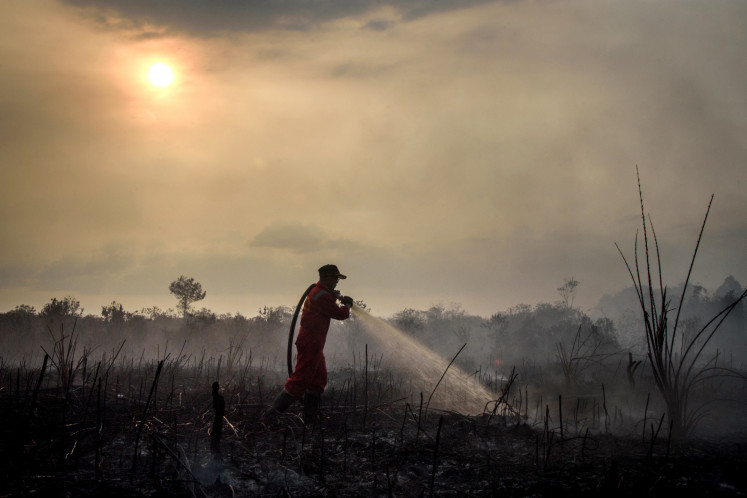Popular Reads
Top Results
Can't find what you're looking for?
View all search resultsPopular Reads
Top Results
Can't find what you're looking for?
View all search resultsMangroves disappearing fast with global appetite for shrimp
A large area of mangrove forests in Lampung, which acts as a buffer for coastal residents from tidal waves, has been depleted rapidly over the past year, especially in South Lampung, East Lampung and Tanggamus regencies, where only 25 percent of the original forests remain
Change text size
Gift Premium Articles
to Anyone
A
large area of mangrove forests in Lampung, which acts as a buffer for coastal residents from tidal waves, has been depleted rapidly over the past year, especially in South Lampung, East Lampung and Tanggamus regencies, where only 25 percent of the original forests remain.
Of the 160,000 hectares of mangrove wetlands that previously covered these regencies, only 20,000 ha remains.
A large portion of these has been turned into traditional shrimp farms, many of which are owned privately.
The shrimp farm operators, who generally come from Jakarta, Tangerang and as far away as Central Java, now own land titles, having bought the land from coastal residents.
"Two years ago, up to 136,000 ha of the 160,000 ha of mangrove forest was badly damaged, indicating that 20,000 ha had been subject to clearing ... Surprisingly, the provincial and regency administrations have not taken any action against *the destruction*," Indonesian Forum for the Environment (Walhi) Lampung chapter director Hendrawan said recently.
A number or regency administrations and Lampung provincial administration had initiated a mangrove replanting programs, Hendrawan said.
"The central government has even provided funds from the state budget worth billions of rupiah for the purpose, but most of the mangrove seedlings have died because of a lack of maintenance and supervision, such as in Sragi and Ketapang districts in South Lampung," Hendrawan said.
Lampung Walhi data shows that of Lampung's mangrove forests converted into large-scale commercial shrimp farms, most were in South Lampung and East Lampung regencies.
"A large portion of these areas is believed to have been cleared by two large-scale hatchery companies," added Hendrawan, who declined to name the companies.
The presence of the large-scale shrimp farms in Lampung had led traditional fish farmers to clear more mangrove forests to make way for shrimp farms, he said.
Ketapang resident Sumarno, 45, said many coastal residents had sold their rice paddies to newcomers in the past two years. Sumarno, who owns 2.5 ha of rice paddies, sold his land last year because it could no longer be used to grow rice.
"We were forced to sell our *land* because it was no longer productive and sea water had permeated the groundwater because of severe coastal abrasion," Sumarno said.
South Lampung Environmental Office head Hasanuri said the regency had virtually no mangrove forests left, and many areas of its remnant mangrove wetlands were in a critical condition.
"Of the 505 ha of mangrove area in Ketapang village, South Lampung, no more than 10 ha remains, spanning at a width of only four meters from the coastline," he said.










